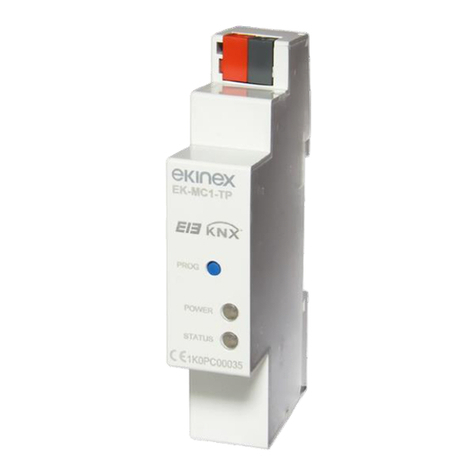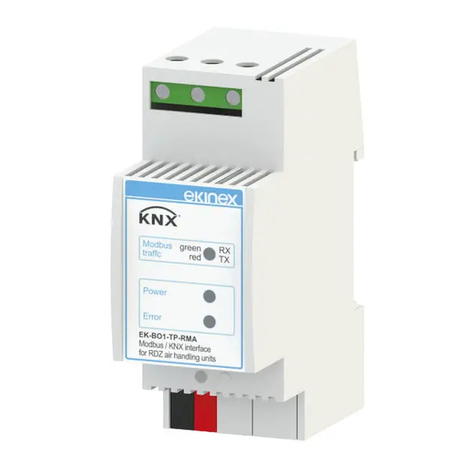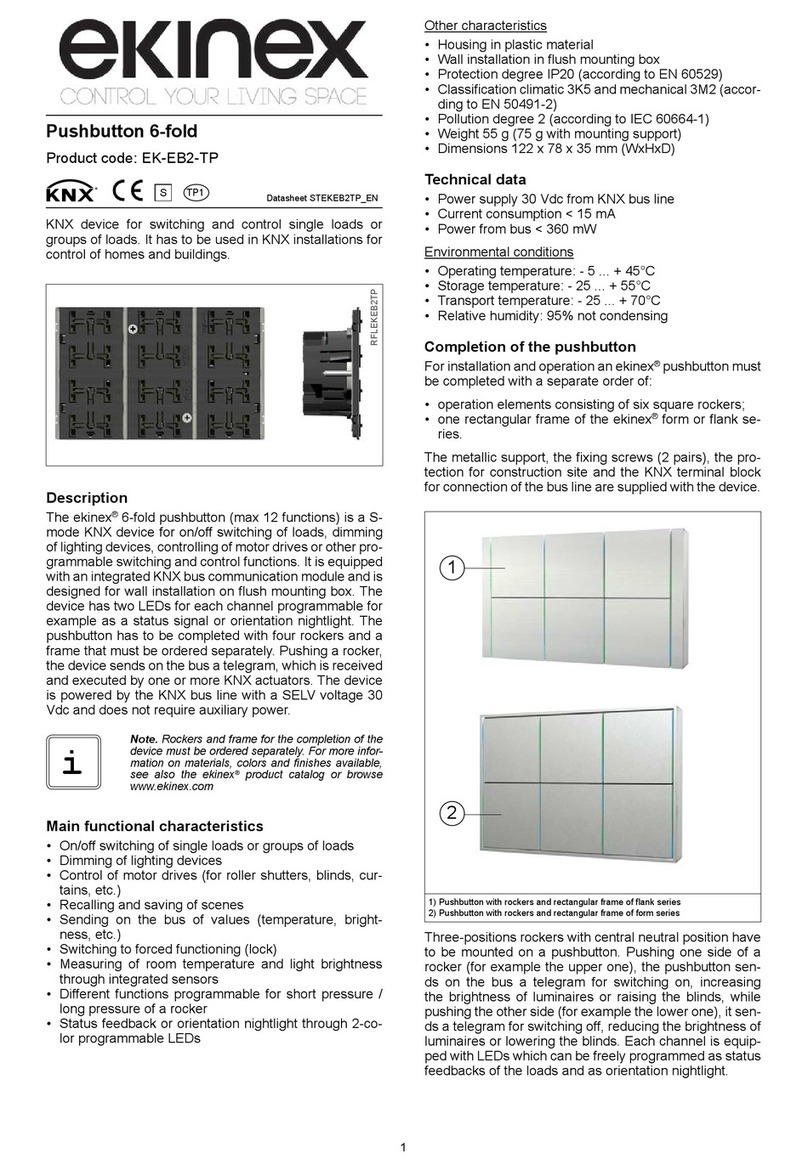
Application manual
KNX binary output modules EK-FE1-TP / EK-FF1-TP
Release 2.1 - Update: 10/2018 MAEKFE1FF1TP_EN
© EKINEX S.p.A. - All rights reserved Page 2
Contents
1Scope of the document.............................................................................................................................. 5
2Product description.................................................................................................................................... 6
3Switching, display and connection elements............................................................................................. 7
4Configuration ............................................................................................................................................. 8
5Commissioning .......................................................................................................................................... 8
6Function description................................................................................................................................... 9
6.1 Startup .................................................................................................................................................. 9
6.2 Offline operation.................................................................................................................................... 9
6.2.1 Operation with bus supply only..................................................................................................... 9
6.2.2 Operation with auxiliary supply only.............................................................................................. 9
6.2.3 Output restore ............................................................................................................................... 9
6.3 Manual operation ................................................................................................................................ 10
6.3.1 Status of the outputs across modes............................................................................................ 10
6.3.2 Activation of manual mode.......................................................................................................... 11
6.4 Online operation.................................................................................................................................. 12
6.4.1 Software working cycle ............................................................................................................... 12
6.4.2 State variables (Communication objects) ................................................................................... 12
6.4.3 Output independent mode and coupling..................................................................................... 12
6.4.4 Output features in independent mode......................................................................................... 13
6.4.4.1 Relay inversion....................................................................................................................... 14
6.4.4.2 Feedback ............................................................................................................................... 14
6.4.4.3 Time delay.............................................................................................................................. 14
6.4.4.4 Staircase function................................................................................................................... 15
6.4.4.5 Logic function......................................................................................................................... 19
6.4.4.6 Lock function.......................................................................................................................... 22
6.4.4.7 Forcing function...................................................................................................................... 23
6.4.4.8 Scene management............................................................................................................... 24
6.4.4.9 Operating hours / Energy consumption counter .................................................................... 25
6.4.4.10 Output restore values............................................................................................................. 25
6.4.5 Output features in coupled mode................................................................................................ 27
6.4.5.1 Coupled output control basics................................................................................................ 28
6.4.5.2 Valve control .......................................................................................................................... 29
6.4.5.3 Shutter control........................................................................................................................ 29
6.4.5.4 Venetian blind control ............................................................................................................ 30
6.4.5.5 Lock function.......................................................................................................................... 32
6.4.5.6 Forcing function...................................................................................................................... 32
6.4.5.7 Meteo alarms ......................................................................................................................... 32
6.4.5.8 Scene management............................................................................................................... 33
6.4.5.9 Output restore values............................................................................................................. 33
6.5 Device settings.................................................................................................................................... 34
6.5.1 Channels configuration ............................................................................................................... 35
6.5.2 Independent outputs: Output xA / xB configuration .................................................................... 37
6.5.2.1 Main parameters.................................................................................................................... 37































